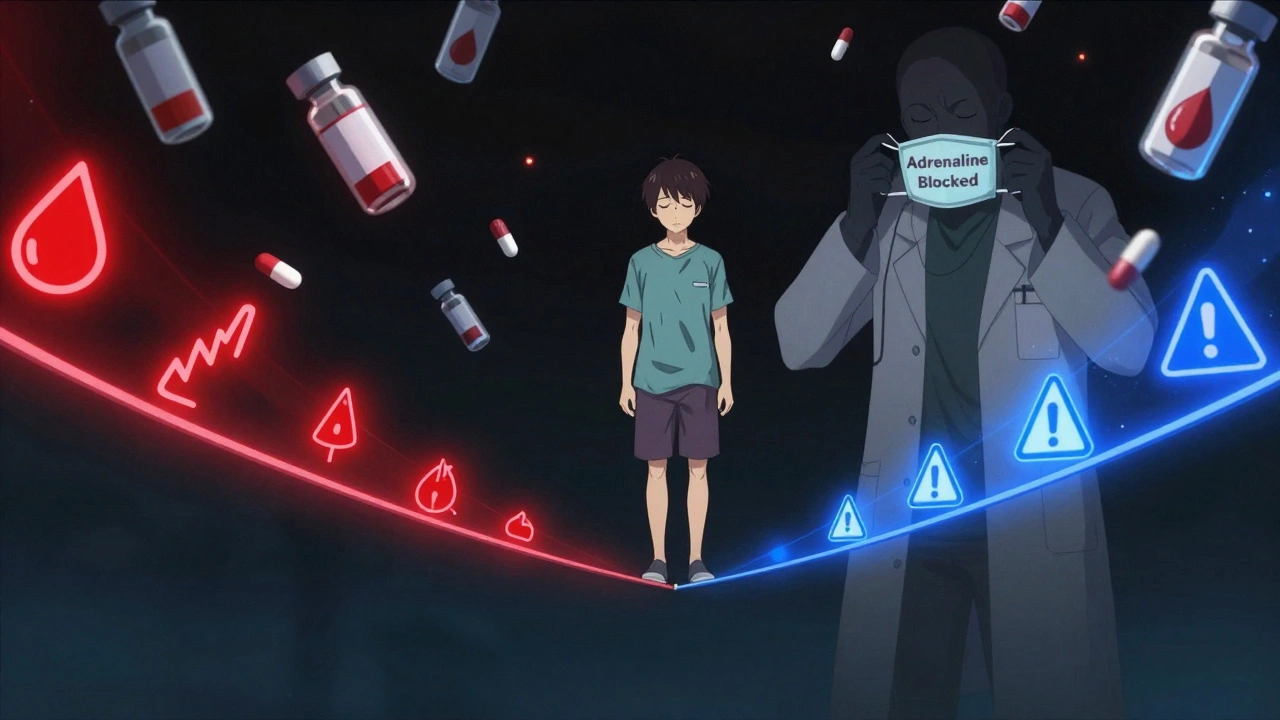Megaloblastic Anemia: What It Is and Why It Matters
When talking about megaloblastic anemia, a type of macrocytic anemia caused by impaired DNA synthesis in red blood cells. Also known as B12 or folate deficiency anemia, it often shows up with fatigue, shortness of breath, and a sore tongue. megaloblastic anemia typically signals an underlying nutrient problem, so uncovering the root cause is the first step.
One of the biggest culprits is vitamin B12 deficiency, a lack of cobalamin that hampers red cell maturation. This deficiency can stem from pernicious anemia, poor dietary intake, or absorption issues in the gut. When B12 levels drop, the bone marrow releases oversized, immature red cells—hence the "megaloblastic" label. Testing B12 levels and checking for intrinsic factor antibodies are common ways to confirm the link.
Another key player is folate deficiency, insufficient folic acid that also disrupts DNA production. Folate shortfalls often arise from alcohol use, certain medications, or pregnancies that increase nutrient demand. Both B12 and folate deficiencies trigger similar blood picture changes, making it essential to measure each nutrient before deciding on treatment.
Related Conditions and How They Interact
pernicious anemia, an autoimmune condition that destroys stomach cells producing intrinsic factor directly impairs B12 absorption, turning a simple deficiency into a chronic problem. Patients with pernicious anemia often need lifelong B12 injections because oral supplements can't bypass the missing intrinsic factor. The condition also raises the risk of gastric cancer, so regular monitoring becomes part of the care plan.
Beyond the nutrient side, macrocytic anemia, any anemia with enlarged red blood cells serves as an umbrella term that includes megaloblastic anemia but also other causes like liver disease or hypothyroidism. Distinguishing megaloblastic anemia from other macrocytic types requires a detailed blood smear and sometimes a bone marrow exam.
Diagnosing megaloblastic anemia usually involves a complete blood count (CBC), serum B12, serum folate, and possibly homocysteine and methylmalonic acid tests. These labs form a diagnostic triangle: low B12, high methylmalonic acid, and high homocysteine point to B12 deficiency; low B12 with normal methylmalonic acid suggests folate deficiency. The right lab panel speeds up treatment and avoids unnecessary supplementation.
Treatment starts with replenishing the missing nutrient. For B12 deficiency, options range from high‑dose oral pills to intramuscular injections, depending on the cause. Folate deficiency responds well to oral folic acid tablets, often 400–800 µg daily, with higher doses for pregnancy. Addressing the underlying cause—stopping an interfering drug, improving diet, or managing an autoimmune condition—keeps the anemia from returning.
Patients frequently wonder if over‑the‑counter supplements are enough. In many cases, balanced multivitamins that include B12 and folate can prevent mild deficiencies, but they won't fix the problem when absorption is blocked. That's why doctors stress the importance of a proper diagnosis before starting any supplement regimen.
Another practical angle is how megaloblastic anemia interacts with common medications. Drugs like metformin, proton pump inhibitors, and certain anticonvulsants can lower B12 levels over time. If you're on these meds, regular blood checks become a smart preventive move. Knowing the medication‑nutrient link helps you catch a deficiency early, before anemia sets in.
Lastly, lifestyle tweaks can boost your B12 and folate stores. Eating animal‑based foods—meat, fish, dairy—provides natural B12, while leafy greens, beans, and fortified cereals pack folate. For vegans, fortified foods or a B12 supplement is essential. Pairing these dietary choices with routine labs creates a proactive health loop.
Below you’ll find a curated set of articles that dive deeper into related drug comparisons, supplement safety, and specific health conditions. Whether you’re looking for dosage guides, side‑effect profiles, or ways to manage overlapping symptoms, this collection gives you practical insights to tackle megaloblastic anemia and its many connections.
Megaloblastic Anemia from Folic Acid Deficiency: Causes, Risks & Prevention
Explore why folic acid deficiency triggers megaloblastic anemia, its underlying causes, risk groups, and practical steps to prevent it.






